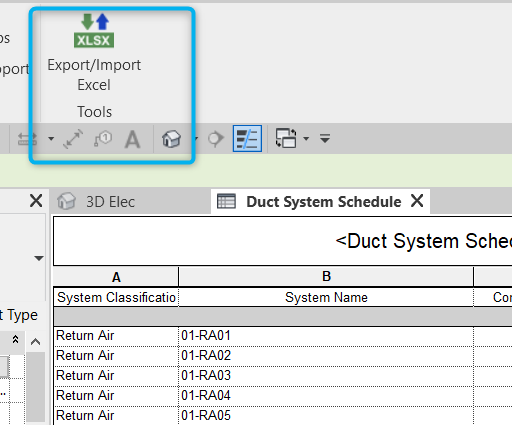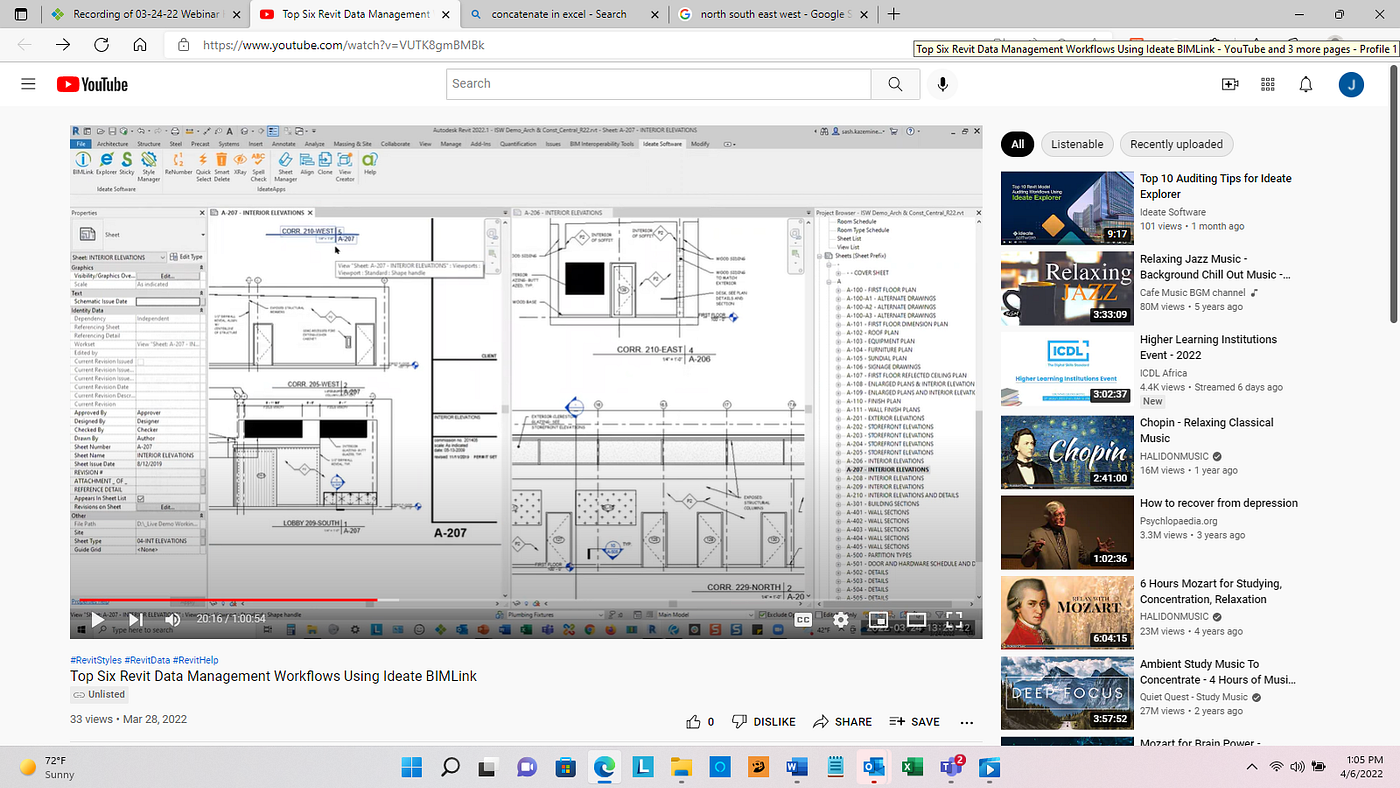Excel-to-Revit: A Game-Changing Operations for Architectural Design - Revealing the Keys
Are you tired of spending hours on architectural layout? Look no more! Presenting excel-to-revit, the game-changing process that will certainly change your style procedure. With excel-to-revit assimilation, you can streamline your architectural style, unlock efficiency, and make best use of partnership within your group. In this short article, we will certainly introduce the secrets of this effective tool, revealing you exactly how it can change your layout projects. Obtain all set to take your building style to the following level with excel-to-revit!
The Power of Excel-to-Revit Assimilation

Think of the comfort of having the ability to modify and upgrade task information in Excel, and immediately see those adjustments shown in your Revit model. Say goodbye to hands-on information entrance or tiresome updates. With Excel-to-Revit integration, you can conserve time and minimize errors by leveraging the power of Excel's functions and solutions to immediately generate accurate data in Revit.
Not only does this integration enhance effectiveness, yet it also improves partnership amongst staff member. You can conveniently share Excel files with coworkers, that can after that import the data into their Revit designs. This promotes a smooth exchange of details and guarantees that everyone is dealing with the most updated information.

Simplifying Architectural Design With Excel-To-Revit
Simplifying building layout is simplified with using Excel-to-Revit (import excel into revit). With this effective assimilation, you can enhance your operations and save beneficial time throughout the layout process. By leveraging the abilities of Excel and Revit, you can effortlessly transfer information between the two platforms, getting rid of the requirement for hand-operated information entry and reducing the threat of mistakes
Excel-to-Revit allows you to import and export data easily, allowing you to quickly upgrade and customize your architectural styles. You can produce schedules, calculate quantities, and produce records in Excel, and after that transfer that data straight into your Revit version. This combination guarantees that your layout details is always updated and synchronized, getting rid of the requirement for manual updates and lowering the opportunities of variances.
By making use of Excel-to-Revit, you can likewise make the most of the effective computational capabilities of Excel. You can do intricate computations, assess data, and automate repetitive tasks, all within Excel. With just a couple of clicks, you can import the outcomes back right into Revit, allowing you to make enlightened layout decisions and enhance your architectural styles.
Unlocking Performance: Exploring the Excel-to-Revit Workflow
Optimize your efficiency by perfectly incorporating Excel and Revit for a more efficient process. With the Excel-to-Revit workflow, you can unlock a whole new degree of effectiveness in your building style procedure. By using the power of Excel's information administration capabilities and combining it with the flexibility and accuracy of Revit, you can improve your design procedure and save beneficial time.
Among the essential advantages of this assimilation is the capacity to import and export information in between Excel and Revit. This implies that you can quickly transfer project information, such as area routines or product quantities, from one software program to the other, eliminating the need for manual data access and reducing the opportunities of mistakes. You can likewise develop custom-made solutions and estimations in Excel to automate recurring tasks and execute complex computations, which can then be seamlessly integrated right into your Revit designs.
In Addition, the Excel-to-Revit operations permits much better coordination and partnership in between employee. With Excel serving as a central information center, several staff member can work on different elements of the project concurrently, sharing and updating information in real-time. This not only boosts communication yet also makes certain that everybody is functioning with one of the most up-to-date data, getting rid of the threat of variances.
Maximizing Collaboration: Excel-to-Revit for Architectural Teams
By effortlessly integrating Excel and Revit, building teams can greatly improve collaboration and achieve more effective layout outcomes. When utilizing this effective operations, you can conveniently transfer data between Excel spreadsheets and Revit models, simplifying the style procedure and boosting interaction among staff member. With Excel-to-Revit assimilation, you can effortlessly import job data, such as space schedules, product quantities, and job specifications, straight right into Revit, eliminating the need import excel into revit for hand-operated information entry and lowering the chances of mistakes. This seamless link permits for real-time updates, making sure that everybody is dealing with the most up-to-date information and preventing inconsistencies in between different documents.
Additionally, by leveraging Excel's effective estimation capabilities, you can execute complicated estimations and evaluation on your design information, giving useful insights and driving informed decision-making. This combination additionally allows you to export data from Revit to Excel, allowing you to create thorough reports, charts, and charts for discussions and analysis. This collaborative process advertises reliable interaction and coordination amongst employee, as Excel serves as a main hub for data monitoring and sharing.
Overall, by welcoming the Excel-to-Revit workflow, architectural groups can achieve higher degrees of collaboration, effectiveness, and precision in their layout process. revit tools. This assimilation empowers teams to collaborate perfectly, making certain that every person is on the exact same web page and adding to the success of the project
Revealing the Tricks of Excel-to-Revit Assimilation

Among the keys of Excel-to-Revit assimilation is the ability to take advantage of the power of formulas and computations in Excel to drive criteria and produce complex geometries in Revit. You can connect Excel spreadsheets to Revit households, enabling you to input information straight right into the spread sheet and have it instantly upgrade in the Revit version. This streamlines the design process and ensures accuracy and uniformity throughout the task.
An additional key is the capacity to develop custom schedules and records in Excel, making use of information removed from Revit. This permits you to envision and assess task details in a method that is not possible within Revit alone. You can quickly produce quantity liftoffs, price price quotes, and job timelines, offering important insights for decision-making and project monitoring.
Furthermore, Excel-to-Revit combination allows efficient collaboration amongst employee. Multiple customers can deal with the very same Excel spreadsheet concurrently, making it much easier to collaborate and track changes. You can additionally utilize Excel's commenting function to provide responses or interact design alterations.
Conclusion
By incorporating the power of Excel and Revit, engineers can currently work more successfully, conserve time, and create far better layouts. Begin integrating excel-to-revit integration right into your building design process today and revolutionize the means you function.
With just a few clicks, you can import the outcomes back into Revit, allowing you to make enlightened style decisions and optimize your building designs.
By making use of the power of Excel's data administration abilities and combining it with the flexibility and accuracy of Revit, you can improve your design procedure and save beneficial time.
By effortlessly incorporating Excel and Revit, building teams can considerably enhance partnership and accomplish extra efficient style outcomes. When utilizing this powerful workflow, you can easily move information in between Excel spreadsheets and Revit models, enhancing the style procedure and improving interaction among group members.Moreover, by leveraging Excel's effective computation abilities, you can do complicated computations and analysis on your design information, giving important understandings and driving informed decision-making.